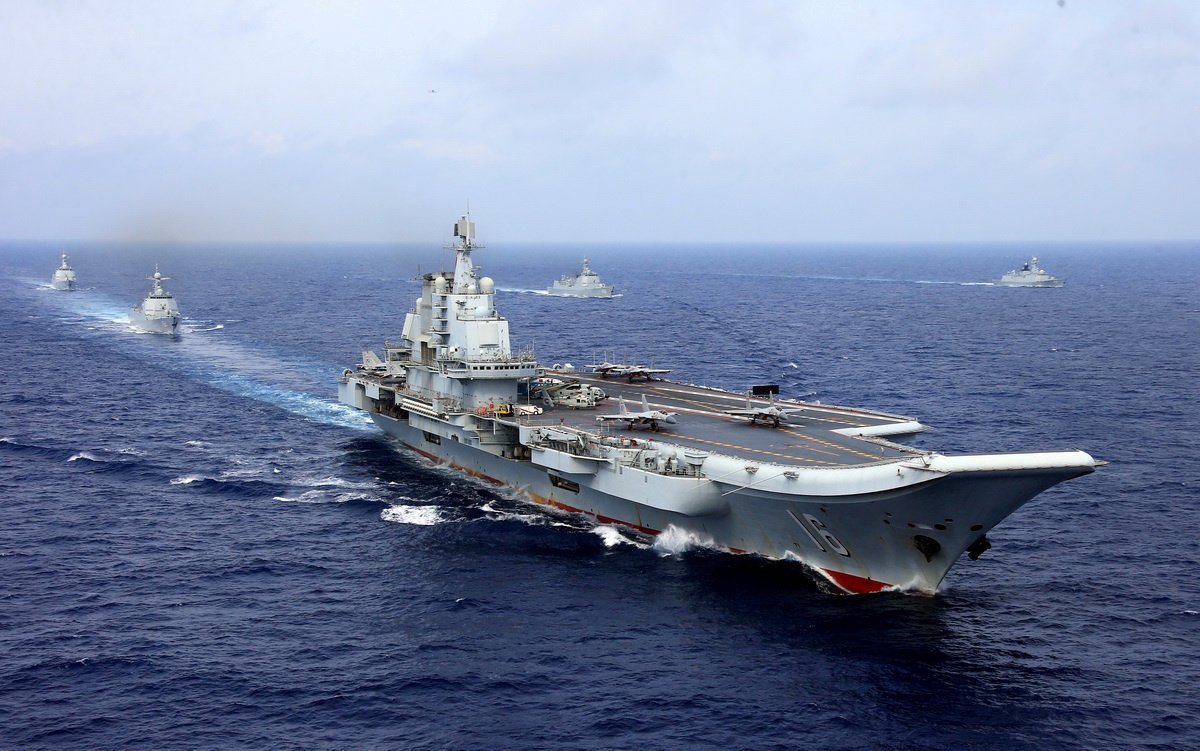Approximately 20 Chinese Navy ships have been observed in waters around Taiwan.

China has initiated large-scale maritime exercises featuring its aircraft carrier in the Western Pacific Ocean. These maneuvers involve more than 20 ships and have been undertaken to demonstrate China's military capabilities and power projection. Approximately 20 vessels from the People's Liberation Army Navy (PLAN) have been spotted operating in the waters around Taiwan.
China's decision to conduct these extensive naval exercises, spanning the waters between Taiwan, the Philippines, and the US territory of Guam in the Pacific Ocean, with the involvement of its second aircraft carrier, the "Shandong," and over twenty other ships, is aimed at showcasing its might and prowess. According to reports from Japan's Ministry of Defense, the aircraft carrier "Shandong" transited the Bashi Channel, which separates Taiwan from the Philippines, en route to the Pacific Ocean. Additionally, Japanese military sources have reported eight PLAN ships moving into the Pacific Ocean via the Miyako Strait, located south of Okinawa.
Since 2021, PLAN aircraft carriers, including the "Liaoning" and "Shandong," have conducted several training missions in the Western Pacific Ocean, but these have typically involved smaller groups of ships, typically four destroyers or frigates along with a support ship.
It is conceivable that these large-scale exercises are a response to recent US military activities in the region, notably joint maritime exercises conducted by the United States with Japan, Australia, and the Philippines in the South China Sea at the end of August.
The Third Aircraft Carrier
Meanwhile, as China's second aircraft carrier continues exercises with other ships, its third aircraft carrier, the "Fujian," which is being built from scratch, is preparing for sea trials. Smoke rising from the massive ship's stack at the Jiangnan Shipyard in Shanghai has been observed recently. The forthcoming trials of the "Fujian" will provide clear indications of China's future capability to construct such carriers. The "Fujian" will still be conventionally powered and have a limited range. However, it can launch aircraft using an electromagnetic catapult system, comparable to that on the USS Gerald Ford or the most advanced US Navy aircraft carriers. The third Chinese aircraft carrier represents a significant evolution compared to earlier Chinese vessels of this type. While they may be inferior to US forces in quality, their potentially greater quantity is likely to confer a distinct advantage. Experts estimate that China may attempt to build a nuclear-powered aircraft carrier by 2040.
According to the Center for Strategic and International Studies (CSIS) in Washington, since 2015, the Chinese People's Liberation Army Navy (PLAN) has surpassed the US Navy in terms of ship numbers and continues to expand. Estimates from the Congressional Research Service (CRS) indicate that, in 2021, the PLAN consisted of 348 ships and submarines. In comparison, according to the US Department of Defense, the People's Republic of China (PRC) possessed 355 ships. For context, in 2021, the US Navy consisted of 296 ships.
It is anticipated that, within 12 years, China will have 475 vessels in its arsenal, while the US Navy will have around 317. However, US concerns are so substantial that, according to USNI News, the US Navy plans to increase the size of its fleet to 381 ships by 2045. Among the factors contributing to the growing disparity in fleet size is the fact that Chinese shipyards are over 200 times more efficient in producing surface and subsurface vessels than their US counterparts.
Many analysts have noted that while Chinese vessels may be of lesser quality, if the US Navy has fewer ships, it will still have a distinct advantage in many respects due to advanced systems and technologies. Furthermore, without a proper network of bases worldwide, China's naval capabilities remain primarily restricted to the South China Sea and the East China Sea. However, according to the US Department of Defense, a key goal of the Chinese navy is the modernization and expansion of its capabilities for military operations along the coast, particularly in the South China Sea and the East China Sea, which are currently the areas of greatest interest to China.